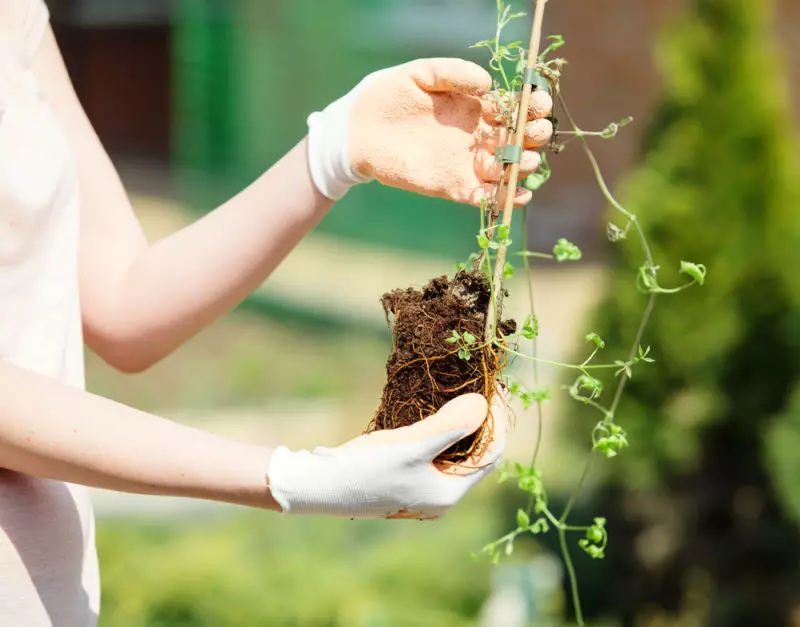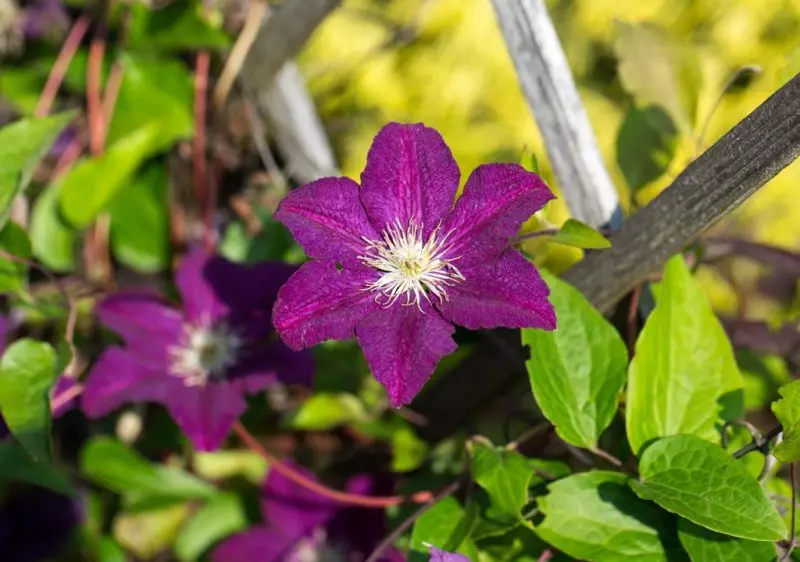Good afternoon, my reader. Sometimes called "Lomonosa" plants are becoming increasingly popular - curly shrubs can be found everywhere: they decorate the gazebo, the walls of the houses and the hedge. If you decide to dilute the greenery of the garden with a bright color of Clematis, this article will become an indispensable assistant in the process of choosing seedlings and soil. Publication also describes in detail the process of planting culture.

Clematis (Photo Used by Standard License © azbukaogorodnika.ru)
Clematis can be grown from seeds, but this is a laborious process, for which even experienced gardeners are taken with reluctance. The plant can also be multiplied by the ways of dividing the bush or decodes, but the less of all the trouble will deliver the acquisition of culture seedlings.

Planting Clematis (Photo Used by Standard License © azbukaogorodnika.ru)
In the process of selecting a seedling, it is necessary to pay attention to the state of the plant - the escape should not suffer from damage to diseases or pests. It is also important to inspect and package - a reverse side usually contains information about the grade and group of trimming, this information will be needed in the process of further care of the shrub.
Clematis seedlings can be attributed to two groups, the features of each of which are described below.
- Soothes with an open root system. Such stalks before the start of landing must be kept in the cold, a conventional kitchen refrigerator is suitable for storage. You can start planted after the awakening of the kidney shooting. Before the procedure, damaged roots should be removed, to treat the plant by fungicide. You can use, for example, "Phytosporin-M".
- Saplings with a closed root system. This seedlings can not be long (more than two to three weeks) to keep at home - the Liana's apartment is quickly growing. Saplings of this type will suit multiple light. We must not forget about regular irrigation of the soil and processing the plants in order to prevent fungal diseases.
Clematis prefer to grow on loose, filled with air fertile soils, the best type is considered dried. It will not hurt to dilute the soil with organic fertilizers - there will be a 1-2 buckets of humoring per square meter of soil.

Clematis on the support (photo used by standard license © azbukaogorodnika.ru)
Heavy soils make it easier with the help of people. Upon completion of the process, a mixture of coarse sand and peat is made in them (one bucket per square meter).
Sour soils are not suitable - this type of soil is neutralized, bringing dolomite flour or lime into it. The last land is diluted in advance during autumn people.
In areas with a warm climate, Clematis in open ground is planted in autumn. Residents of the northern regions with landing is better to wait until spring. For landing, a hole is used with dimensions of 60 × 60 × 60 centimeters. Algorithm of the procedure:- A 15-17-centimeter drainage layer is laying on the bottom of the Lunka to land - it will take on the regulation of the moisture level in the soil. As a drainage, you can use brick fragments, fine gravel, claymzit.
- Two thirds of the landing jama fill with a mixture of chernozem, humoring, sand and peat. After the soil is mixed with 200 grams of ash or 100 grams of organic fertilizer and moisturize, a holmik form from the soil.
- All extra branches with Clematis seedlings are removed, leaving only developed kidneys and located at the base of the cutting knots. The plant is strengthened on the surface of the Holloch, roots spread.
- The landing jam is filled with fertile soil. Root neck plants upon completion of the process should be at a depth of 8 to 12 centimeters below the soil level.
- A seedling is watered, a support is installed next to the escape.
After planting the plant, it is recommended to mulch the soil. It will not be superfluous to shading the base of shoots - for this you can surround the shrub of a living carpet of soil plants.
Clematis needs a lot of moisture - in the period of hot, dry weather frequency of irrigation can reach 3-4 times a week. After 1-2 days after irrigation, the plant's ambient plant must be loosen and inspired.
Resort in the process of care of the shrubs and to help various fertilizers. Clematis are suitable organic and mineral feeding:
- Corovac solution (1:10);
- Superphosphate (20 grams per 10 liters of water);
- urea (30 grams of 10 liters of water);
- Chicken litter solution (1:15);
Clematisams are not terrible. Strong frosts are worse than these plants are experiencing thaw and periods of windy weather. In the fall, shoots should be dipped with peat or humus, residents of the northern regions are recommended to cover the shrub 20-30-centimeter layer of the huskoth or sawdust.
